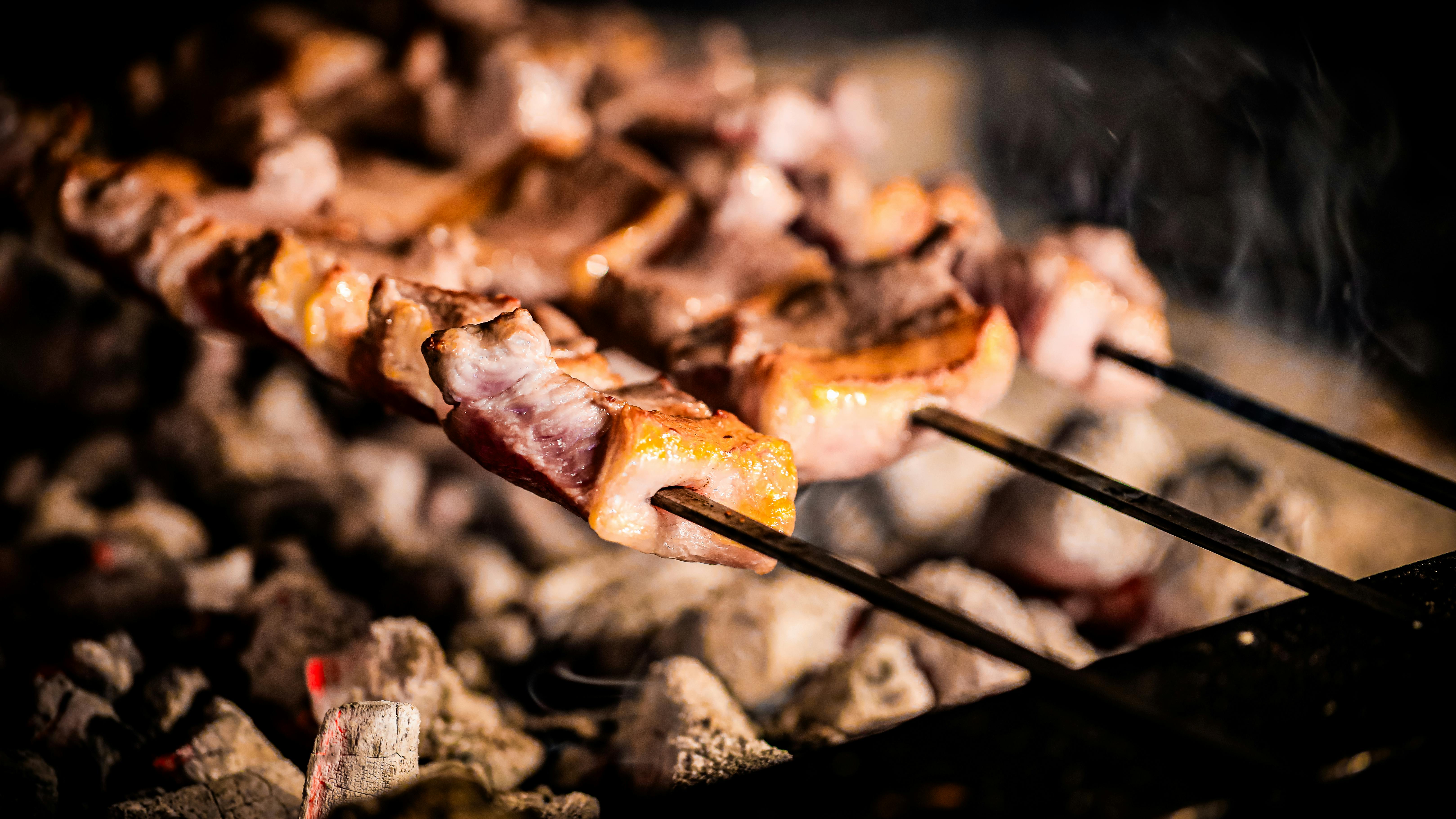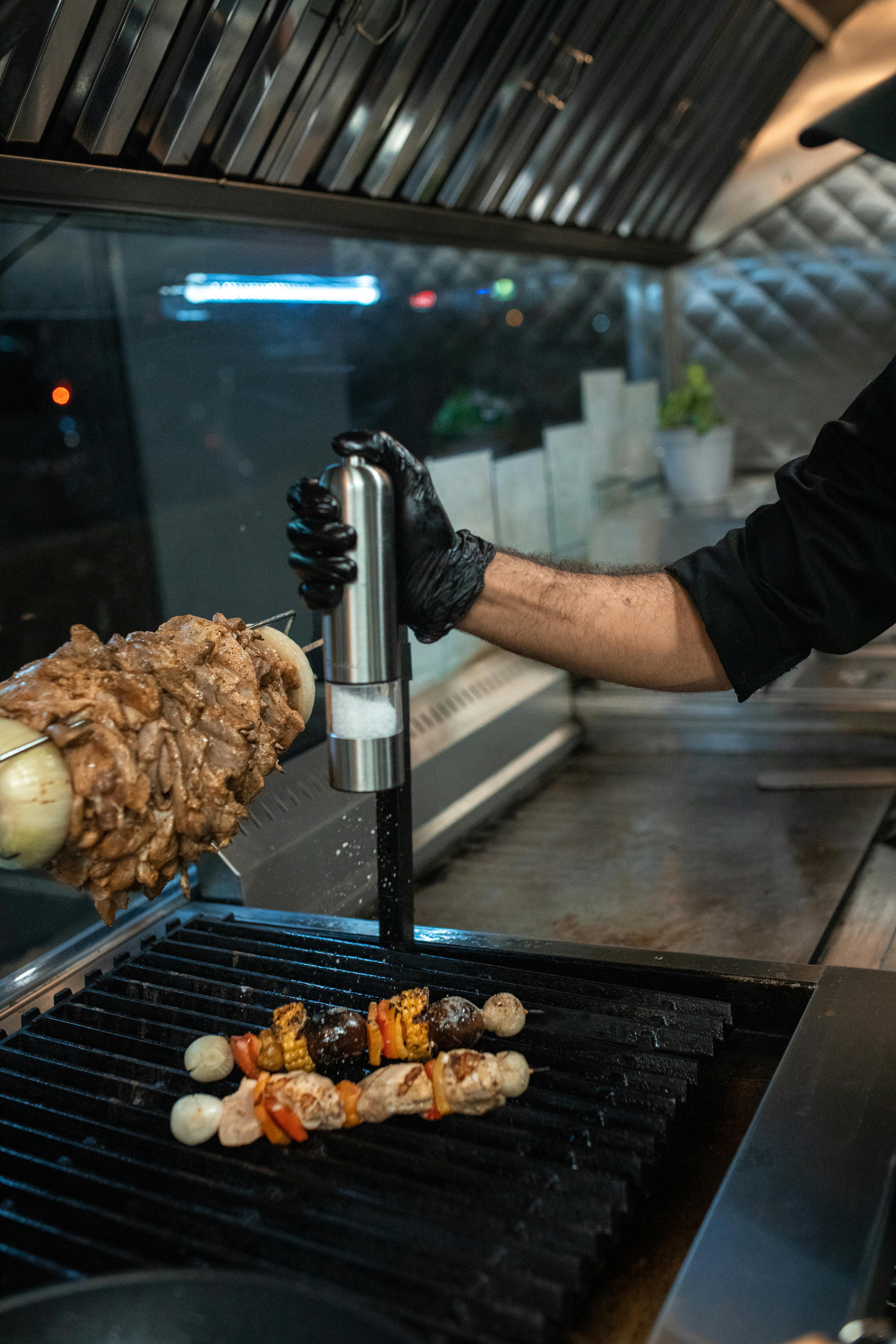Turkish Kebab Preparation: Restaurant-Quality Methods for Home Chefs
Back when I first dipped my toes into the world of Turkish kebab, I’ll admit—I thought I was prepared. I’d been grilling steaks, flipping burgers, and skewering veggies for years. Turns out, Turkish kebab is… a completely different world. You know those moments where something looks “easy” from the outside—until you try to replicate it and realize every little detail actually matters? That’s Turkish kebab for you. This guide aims to break that intimidating barrier, pulling together authentic techniques, chef-level secrets, and the cultural context that makes every bite unforgettable 1.
Anyone who’s visited Turkey probably has vivid memories—a bustling open-air market in Istanbul where the air practically vibrates with the aroma of charred lamb fat, fragrant spices, fresh vegetables, and fire-kissed bread. Funny thing is, even for locals, the spectrum of kebab types, methods, and regional subtleties can be daunting. Let me clarify: kebab isn’t just food; it’s living history, a social ritual, and honestly, the foundation for countless culinary debates, especially when family recipes collide with new techniques 2.
So, why prepare kebab at home? For me, it started as a nostalgia trip—wanting to recreate those restaurant-quality textures and flavors without flying halfway across the world. But what really gets me now is the creative control: dialing up smoke, fiddling with spice, testing marinade durations. And, of course, the joy of sharing platters around the table, where every guest claims to know the “right” way.
Ever wondered what makes Adana kebab taste so radically different from a classic döner? Why some kebabs are cooked over open flames, while others sizzle in clay ovens? Or how professional chefs achieve that perfect balance between char and succulence, even using home grills? This comprehensive guide answers all that—and more—giving you the essential skills, troubleshooting tips, and nuanced techniques you need to crush kebab night at home.
Why Turkish Kebab Holds Culinary Royalty
Let me step back a moment. What exactly is “kebab” in Turkey? The answer changes wildly from region to region—and, honestly, even from house to house. “Kebab” covers grilled meats, oven-roasted specialties, stuffed vegetables, and slow-cooked stews. Some claim the heart of true kebab is lamb fat, others insist it’s the technique or the wood used for grilling 3. I remember debating this with a chef in Gaziantep; his answer? “Kebab is the conversation. The rest is just details.”
But let’s get technical. Turkish kebab is distinct because of its fierce commitment to authenticity—using specific cuts, blending spices in precise quantities, and respecting time-honored preparation rituals. Each kebab type—be it Adana, Urfa, Şiş, Döner, or Testi—carries its own “rules,” shaped by local geography, history, and available ingredients. For home cooks? Adapting these traditions is both exciting and, at times, deeply humbling.
In my experience, the biggest mistake is glossing over the prep phase. Every pro-level kebab begins with a careful balance of fat and lean meat, followed by rhythmic seasoning, mindful marination, and, crucially, the right cooking method. I learned this the hard way after oversalting a batch of lamb for a friend’s birthday. That night, the “kebab” was just… salty cubes on sticks. These days, I measure twice, season thoughtfully, and always give myself space to course-correct.
Kebab Basics: Essential Cuts, Spices & Equipment
Here’s the thing most recipe sites miss: Turkish kebab isn’t just “meat on a stick.” The choice of cut, fat ratio, spice profile, and cooking tool all radically affect your final result. If you start with the wrong lamb cut, use cheap skewers, or skip resting your marinade—well, you won’t get that climb-off-the-skewer tenderness that defines top kebab shops 4.
- Lamb shoulder: Preferred for Adana and Urfa kebabs (20% fat minimum)
- Beef chuck: Used for Şiş and some oven-baked versions
- Poultry: Chicken thigh, never breast—chicken kebab must be juicy
- Spices: Sumac, aleppo pepper, paprika, cumin, dried mint
- Tools: Wide flat skewers, metal mesh grills, cast iron pans, and for Testi kebab—a traditional clay pot
Before you buy your meat, pause and think about your grill setup. Turkish kebab pros swear by wood charcoal for flavor, but gas, electric, and even oven methods can yield delicious results at home if you follow these foundational steps. Consider this your toolkit: start with the basics, refine as you go, and don’t be afraid to embrace imperfection. That’s where real flavor is born.
Core Preparation Methods: Skewered, Grilled, Oven-Baked, and Beyond
Actually, here’s where I need to clarify something: while skewers dominate Turkish kebab lore, the real magic often happens away from the grill. I used to think skewered meats were all there was. Turkish chefs quickly corrected me—turns out, oven-baked kebabs (“Fırın Kebabı”), clay pot stews (“Testi Kebabı”), and even sautéed versions rival anything you’ll find on a stick 5.
- Adana/Urfa Kebab: Spicy mincemeat, hand-mixed, wrapped around wide skewers and grilled over open flame
- Şiş Kebab: Diced chunks of lamb or beef, sometimes with vegetables, marinated and skewered
- Döner Kebab: Vertically stacked meats slow-roasted on a rotisserie, sliced thin
- Testi Kebab: Marinated meat and vegetables, sealed inside a clay pot and slow-cooked for hours
- Fırın Kebabı: Large joint cuts roasted in a covered tray, often with minimal spice
Let’s break down how to adapt these for your home kitchen—restaurant-style. You don’t need a vertical rotisserie or open pit fire (though if you have those, call me). What’s important? Honoring each method’s unique process, from marinating to layering spices, controlling heat, and mastering timing. For Adana kebab, I now spend twice as long kneading the meat than I used to. Why? Gluten formation and spice absorption—the things that make restaurant versions taste “different.” This evolution in my thinking didn’t come overnight; countless trial runs (and burnt skewers) later, I truly grasped the patience needed.
Restaurant vs. Home Cooking: Key Differences
| Method | Equipment | Signature Result | Home Adaptation Tips |
|---|---|---|---|
| Adana/Urfa Skewer | Charcoal grill, flat metal skewers | Smoky, juicy, crispy on edges | Broiler, grill pan, wood chips for smoke |
| Şiş Kebab | Metal/wood skewers | Charred crust, marinated flavor | Cast iron pan, pre-heated oven |
| Döner Kebab | Rotisserie, vertical spit | Thin, crispy slices | Stacked layers, slow roast, high heat finish |
| Testi/Fırın Kebab | Clay pot, covered baking tray | Tender, deep flavor, juicy | Dutch oven, covered casserole, slow-cook settings |
What I used to overlook: seasoning layers. Turkish chefs create depth by applying spices at multiple stages—sometimes to the meat before marination, then again before grilling. The result? Layers of flavor, each one revealed with every chew. This might sound excessive, but I’ll argue it’s precisely what makes the “restaurant-quality” experience.
Key Insight:
When you cook kebab at home, spend more time on prep than actual cooking. Mix, marinate, rest, repeat. Rushing marination is, from my own experience, an easy way to end up with bland or tough kebabs.Marinades, Rubs & Seasonings: Chef Secrets for Real Flavor
Last month, while shadowing a chef in İzmir, I saw something unexpected: kebabs marinated for exactly 160 minutes—not longer. This level of precision felt overwhelming, yet the reality is that each kebab style demands its own ritual. For Adana, coarse salt and pul biber (Aleppo pepper) are hand-kneaded until the fat emulsifies. For Şiş kebab, yogurt and onion break down tough fibers, and for Testi kebab, tomato, garlic, and herbal blends steep overnight for unmatched depth 6.
- Salt first, always: Draws moisture and starts flavor formation
- Spices in layers: Early in the process, then fresh before grilling
- Acidic elements (yogurt, lemon): Tenderize and brighten flavor
- Resting after marination: Room temperature for 20 minutes before cooking—never straight from fridge
I need to revise my earlier point about “any spice will do”—no, Turkish kebab demands specificity. Cumin, sumac, pul biber, and black pepper are essentials; garlic, thyme, and dried mint round out regional profiles. My breakthrough came when I finally sourced pul biber from a Turkish market. That smoky-sweet profile is, genuinely, a game-changer.
Ever notice how restaurant kebabs glisten and caramelize perfectly? That’s fat—and patience. At home, mix minced lamb fat into your ground meat (aim for 20%). Don’t have lamb fat? Beef suet or duck fat are solid substitutes. But let that sink in: fat content changes everything.
Moving on, let me think about this: if you’re new to Turkish spice blends, start slow—taste as you go, keep notes, evolve the recipe. The jury’s still out on “one true mix.” Adapt to what tastes best in your kitchen. That’s where home innovation outshines even the best restaurant kitchens.

Home Adaptations: Getting That Restaurant Quality (Without Restaurant Tools)
Let’s step back and talk practicality—how do regular folks, without commercial rotisseries or open-flame grills, produce kebabs that rival the best Turkish restaurants? Honestly, I used to think it was impossible. The more I experimented, the more I realised it’s absolutely doable with a handful of smart tactics and a willingness to fail (and learn!). These days, my kitchen sees as many grilled mistakes as triumphs—but both have taught me what actually works.
Essential Home Tools & Smart Substitutions
- Wide, flat metal skewers (for even heat and perfect caramelization)
- Grill pan or broiler (with wood chips for added smokiness)
- Cast iron skillet (excellent for “Şiş Kebab” and oven-baked styles)
- Dutch oven or covered casserole (for Testi and Fırın Kebab)
- Kitchen thermometer (for precise doneness)
- Wooden skewers (soaked overnight for oven use)
I remember when I made my first Adana kebab at home—using a tiny countertop grill and pre-ground supermarket lamb. The flavor? Not impressive. But I learned something crucial: reshaping meat by hand and layering spices right before grilling dramatically improved the outcome. It’s the kind of personal discovery that never shows up in cookbooks.
Pro Tip:
For restaurant-level juiciness, always rest your cooked kebabs for 3–5 minutes before serving. This small step allows juices to redistribute, ensuring every bite is tender and flavorful.Troubleshooting Common Problems (And Real Solutions)
Let me clarify some common issues—these tripped me up more times than I care to admit:
- Kebab sticks to the grill. Solution: Pre-oil both the meat and grill (and let grill heat up fully before starting).
- Dry or tough kebab. Solution: Increase fat ratio—never go below 18%, and always rest your meat pre-grill.
- Kebab falls apart. Solution: Mix meat thoroughly and chill before skewering. Minced lamb needs “binding”—knead, don’t just mix.
- Bland flavor. Solution: Season in layers. Taste your marinade raw (before cooking!) to ensure punch.
Here’s a table that shows the most common home kebab roadblocks with practical fixes:
| Mistake | Cause | Quick Fix | Pro Tip |
|---|---|---|---|
| Meat sticks to grill | Grill not oiled/warmed | Oil before & after; preheat grill | Use flat skewers |
| Dry kebab | Low fat, overcooked | Increase fat, reduce cooking time | Rest cooked meat |
| Falling apart | Under-mixed, not chilled | Mix thoroughly, chill meat | Hand knead for 8 min |
| Bland flavor | Underseasoned | Add seasoning in layers | Taste marinade raw |
Moving on, I know some readers will ask “what about vegetarian kebabs?” Turkey delivers here too: try “Çöp Şiş” with mushrooms, eggplant, and pepper—marinated and grilled the same way. Don’t forget, classic kebab accompaniments are just as crucial to the restaurant feel.
Regional Masterpieces & Modern Twists: Adana, Urfa, Testi & Chef Innovations
Ever wonder why Adana kebab spicy heat is so addictive, while Urfa’s remains smooth and subtle? It’s about not only spice level, but also tradition and local pride. Three years ago, I championed “Adana style” in a family cook-off—my mother’s Urfa version stole the show. Her secret? Gentle marination and avoiding pepper flakes altogether. Turns out, sometimes less is more.
- Adana Kebab (SE Anatolia): Bold, fiery, high in lamb fat, pul biber for heat
- Urfa Kebab (SE Anatolia): Subtle, earthy, relies on cumin and gentle onion marination
- Testi Kebab (Central Anatolia): Slow-cooked in a sealed clay pot—breaking the pot open for serving is iconic
- Döner Kebab (National): Layered, spit-roasted; at home, stack thin slices and bake with high heat finish
My current thinking? Modern Turkish chefs are constantly reimagining kebab—smoked duck kebab, vegetarian eggplant “Şiş,” and fusion sauces. Podcast interviews suggest this innovation wave will only accelerate 8. If you find yourself bored with lamb, try chicken thigh marinated with yogurt and oregano, or go for blended ground beef-lamb kebabs.
Before we go further, let’s think about layering sides and garnishes: sumac onions, bulgur pilav, grilled tomatoes, and lavash bread. They’re not just extras—they deepen and balance kebab flavors. Honestly, skipping sides is a rookie move I won’t repeat anytime soon.
Troubleshooting & Recovery: From Burnt to Brilliant
Here’s the thing: mistakes are inevitable—even for pros. Last spring, my kebabs turned out dry enough to bounce. Instead of tossing them, I repurposed the leftovers as “kebab pide”—diced meat, fresh herbs, and cheese on Turkish bread. Honestly, some of my tastiest discoveries have stemmed from failed batches. The more I embrace mistake recovery, the more confidence I gain in experimenting.
Recovery Tip:
If your kebab is too salty, pair it with unsalted yogurt and plenty of fresh parsley. If it’s too bland, finish it with a sprinkle of sumac and a dash of lemon juice right before serving. Adjusting at the end is sometimes a game changer.What I should have mentioned first: kebab is often the centerpiece of celebration, family gatherings, and late-night street feasts. The goal isn’t perfection—it’s delicious connection. My first kebab party saw as many laughs as culinary triumphs, especially when the grill went “rogue.” And that memory, oddly enough, is what keeps me reaching for skewers every time.
Pro Tips: Plating, Garnishing & Restaurant-Level Presentation
Presentation matters. At home, a simple platter can mimic restaurant aesthetics brilliantly if done thoughtfully. Think about balance: vibrant grilled veggies, sumac-dusted onions, dips (hummus, ezme, cacık), and soft, warm lavash bread. Sprinkle pomegranate seeds for visual pop. Arrange skewers diagonally—never stacked. Take a second to consider: how would you want to eat this at a restaurant?
- Spread dips out for easy grabbing—never crowd the plate
- Use garnishes that contrast—green parsley, red tomatoes, white onions
- Rest meats briefly before serving for maximum juiciness
- Warm bread (never cold!) to wrap kebab pieces
Repurposing & Longevity: Seasonal Adaptations and Content Longevity
One more thing: Turkish kebabs shine year-round, but seasonal ingredients make a real difference. Summer ushers in tomatoes and peppers for the grill, while winter stews (Testi Kebab) rely on root vegetables and preserved spices. My advice? Track what works best in your climate and calendar—adapt recipes as markets change.
Looking ahead, the modular structure here lets you easily extract social snippets, create photo-friendly “step-by-step” visuals, or even record video demos based on each process. Podcast segments featuring regional stories or chef interviews offer rich follow-up content. Discussions from this guide can turn into online forums, live workshops, or Instagram Q&As. Flexibility in Turkish kebab means there’s always a new angle for content creators and home cooks alike.
References & Further Reading



